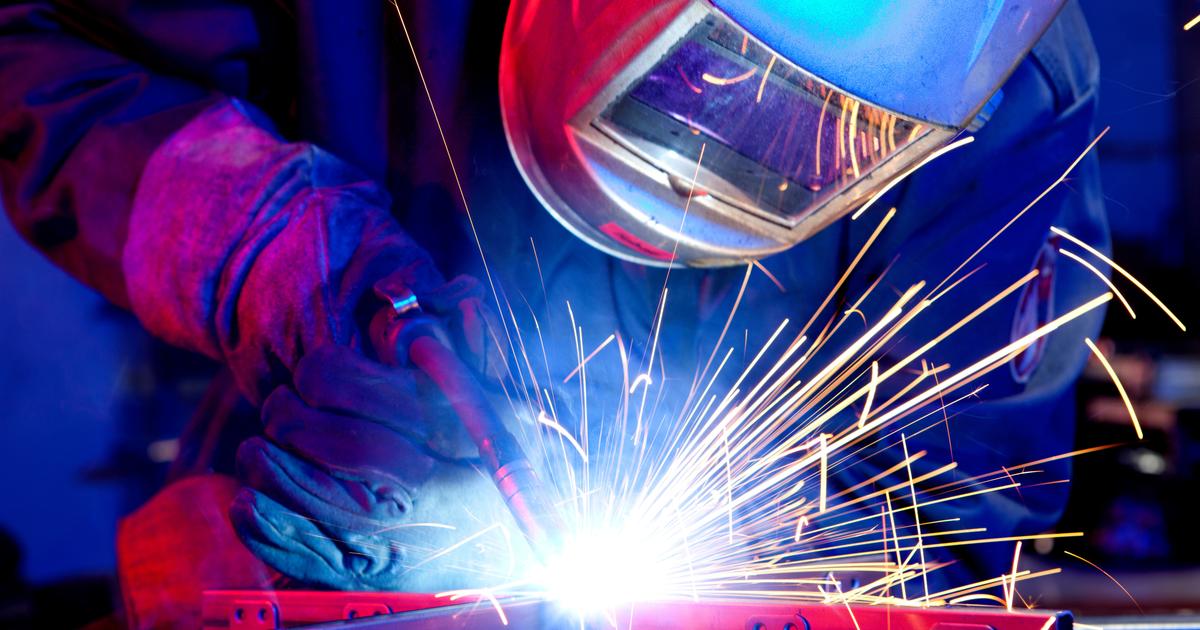Learn welding techniques
Stéphane's workshop is a unique place where metal predominates, both through the architecture and through the numerous sculptures created by the artist.
After a few explanations on the course of the hours to come, I equip myself to be well protected against electricity and splashes of molten metal.
To discover
What to plant, sow or harvest in March?
The first hour is devoted to theory.
Stéphane introduces me to the different welding techniques which are brazing (bonding) and soldering (melting of the material).
It is the latter that I will tackle using an electric arc welding station.
It allows the “mixing” of metals from the same family: steel with steel, stainless steel with stainless steel, and aluminum with aluminum.
To fully understand metal and its reactions when heated, you need to have a minimum of knowledge in physics, electricity and mechanics.
It’s dense, but necessary!
Good to know
Striking serves to dig the end of the electrode, a necessary condition for creating the electric arc.
How to choose your welding equipment?
Stéphane was very clear and educational in his explanations, but I have a whole bunch of information in my head.
I really didn't think so many things came into play.
To see a little more clearly – so to speak, because the black window of the protective mask only allows very little light to filter through – all that remains is to put it into practice.
Stéphane therefore offered to give me a demonstration to show me the different types of welding, breaking down all the actions to be carried out.
Before starting, he explains to me how to choose the right electrode (1.6, 2, 2.5, 3.2 or 4 mm), which varies depending on the type of work you want to carry out.
For a “spot” weld, the diameter must be greater than or equal to the thickness of the thinner of the two pieces of metal.
For a “bead” (continuous) weld, it is the opposite: the diameter must be less than or equal to the thickness of the thinnest part.
Stéphane asks me to concentrate on what I see, but especially on what I hear.
A perfect electric arc emits a specific light and sound.
Start soldering yourself
The welding machine is turned on.
I position my electrode and lower my mask.
I prime and check that the tip of my electrode is hollow.
It's good, so I can start my soldering.
I hold the electrode at about a 40 degree angle to the piece I have to work on.
The position is unnatural, especially with mounting stress.
With a dynamic movement, without putting any force or weight, I create an electric arc by tapping its end on the metal and immediately lifting it.
It must “float” a few millimeters of dust from the surface.
The operation is really not easy.
If it's too close, I extinguish the arc, and the electrode is immediately caught in the metal (it comes off easily).
If it is too far away, I lengthen it, which has the effect of widening the weld pool and removing more material than I add.
It's like a small volcanic eruption, with projections in all directions.
My first attempts at soldering were, it can be said, a real fiasco!
You have to be able to carry out a multitude of small gestures with perfect coordination, and I'm quite far from that.
Stéphane therefore offers to take me by the hand, literally and figuratively.
To understand and better feel the distribution of movements, I let myself be guided.
Trick
The impurities contained in the metal rise to the surface.
To remove them: a light blow with a hammer and brush.
Soldering Requires Practice
I only have one idea in mind, to achieve a soldering point worthy of the name.
I had to practice for a long time and use a good number of electrodes before arriving at an approximately correct result.
I compare with the demonstration welds carried out by Stéphane to evaluate my work.
There's still a little work to do!
Also read: 3 hours to learn goldsmithing
Welding workshop assessment
I must admit that I had some apprehension before participating in this workshop.
Between the protective clothing, the handling of powerful electrical devices and the molten metal, there is still plenty to be impressed by!
Above all, I discovered to what extent welding requires constant concentration because, with the protective mask, you work blindly.
The black glass that protects the eyes only allows a minimum of light to pass through.
I barely saw anything of what I was doing.
It's all in the sensations and the mastery of gestures.
Thanks to Stéphane's valuable advice, I was able to discover a truly fascinating world.
More information
Les Ateliers d'Argenteuil, 14, rue de la Procession, 95100 Argenteuil.
€199.
From 15 years old.
lesateliersdargenteuil.com, wecandoo.fr,ateliersdargenteuil@free.fr, 06 20 60 03 80.

